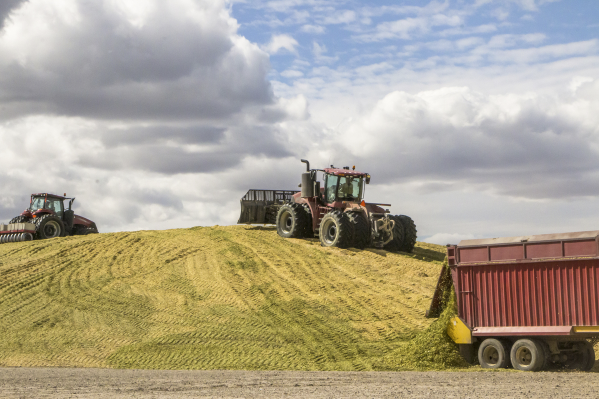Exploring options and selecting management software, programs and tools for your farm can become overwhelming in short order. Technology tools rapidly evolve with new features, which can muddy the picture and make it seem difficult to weigh the pros and cons of various options.
However, renewing or adopting feed management technology on your farm does not have to add to your daily stress level. Following are nine best practices that can help simplify the process, clarify your goals and determine what system best meets your needs today and in the near future.
1. Use your trusted advisers
Who helps you make your best decisions? Who do you trust to offer valuable advice for your farming business? Even if a trusted adviser isn’t an expert on the exact topic, he or she can likely ask questions to help you think through the process and keep you from getting distracted by the opinions of everyone who pulls into the driveway.
2. Feed management programs are not forever
Technology updates at a rapid pace, and this is changing the landscape of feed management programs. At one time, investing in a feed management program was in the realm of buying a new farm pickup. Today, there are options that are more like having a cellphone plan. As technology and software move to subscription-based services, it’s easier to make a switch when a program no longer meets your needs. You have more opportunities to graduate to additional or different programs to continue meeting your goals.
3. Think about what you’re doing today
Are you using batch sheets from your nutritionist, spreadsheets or a feed management program? How satisfied are you with your system and the results? Does your system allow you to efficiently make ingredient dry matter (DM) adjustments, pen count changes and intake adjustments? Are you getting the reports you need to make feed decisions that would improve ration formulation, ingredient handling and mixing efficiency?
4. Have a discussion with your nutritionist to rank your priorities
This discussion should center on what aspects of a feed management program are most important for your operation. If you currently use paper batch sheets or a spreadsheet, you may simply want a system that lets you update ingredient DM, pen counts and intakes, and communicate with the scale. Efficient batching is how most of the programs are used today.
If you’re already using a software program to manage batching, your goal might be to get a handle on overall ingredient usage, errors and shrink. Others may need a better way to track DM intakes and the precise time feed is delivered. You will need to identify the areas that add value to your overall decision-making. All feed management programs will have features that you will consider useful – but not vital – to what you do to successfully operate your operation. Ranking these are key.
5. Talk to other farmers
Discuss the technology you are interested in with your farming peers. We often learn the most from what our peers have experienced, what they like, what has frustrated them and what they have on their wish lists. Talking with other farmers can help you identify the resources that will improve how you feed animals and, ultimately, your bottom line. The cool part about technology changing so quickly is: when one program makes a big switch, it often pushes other companies to enhance their features as well. Your peers can help you think through these enhanced features.
6. Consider your technology preferences
What is your view on technology? Do you like using mobile apps and having data in the cloud or do you prefer using a personal computer (PC)? Historically, programs used PC-based software and a data-transfer system to communicate to a specific feed management program’s scale head. Today, many apps use the scale head purchased with the mixer and connect via Bluetooth. The newer technology has allowed significantly more users and devices to participate in the feeding system. Better internet connections have allowed both apps and the PC-based programs to update frequently.
Technical support is also a consideration as some vendors are more responsive to emails and others are better with phone calls. What do you or your team prefer? Ask vendors about their technical support processes before you make a purchase.
7. Realize you will never use all the features a program offers
This is just a given, and it’s OK. Some feeders dream of weighing refusals from each pen, but then realize the skid steer that cleans the feed alley will not reach to load the feed wagon. Others want to track feed inventory but struggle with how to calculate the actual forage inventory or enter the receipts from feed delivered. In most programs, there will be reports you will never use. Figure out what you can do, what you cannot do, what efficiencies you can gain, what is going to take more time and what is most important to your team.
8. Improving feed management should be a goal
As you narrow your choices, consider whether a program will help with routine TMR feed management evaluations. Key items to evaluate are feeder loading accuracy, delivery accuracy, timing of deliveries, inventory shrink and change histories. Feed programs can help farm managers better observe these critical components, make adjustments, invest in tools and train employees.
9. Challenge yourself to improve
We often think it’s easiest to stick to a routine because we feel it works. As you evaluate a program, can you see that it meets current needs while also providing an opportunity to challenge yourself to get better in an area of feed management?
The best management practices of renewing or adopting feed management programs comes down to a rather simple decision-making process. Involve just a few of your best advisers and your feed team. Ask the questions most important to your operation and select the programs you believe best meet your needs. At the end of the decision-making process, you should have a program that meets the goals you set out to attain and helps you rest easier at the end of the day.








